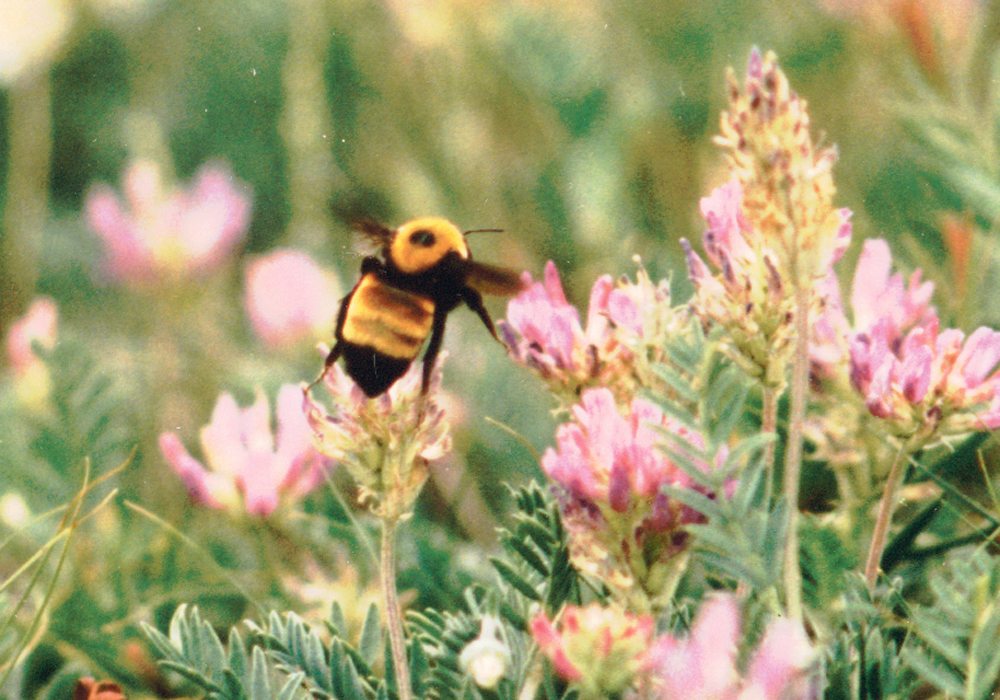Green, the colour of new life, has started to come back to areas of Alberta and Saskatchewan that were blackened by fire last October.
Some tame species, especially crested wheat grass, are growing again near Hilda, Alta., and in other parts of the 17,400 acres of pasture that burned in a devastating wildfire. Native prairie was also showing tinges of green in early May.
Absent is alfalfa, those bushy and nutritious bunches that typically dotted the landscape.
“The hayland that was burned is nonexistent,” said Josh Beck, a farmer in the Hilda area who saw fire engulf about 2,000 acres of the family’s land.
Read Also

Farming Smarter receives financial boost from Alberta government for potato research
Farming Smarter near Lethbridge got a boost to its research equipment, thanks to the Alberta government’s increase in funding for research associations.
“The alfalfa that was in there is burned right out. We’re going to have to reseed all of that.”
Other stories in this Special Report:
- Prairies brace for new fire season
- A land heals after devastating fire
- Army base improves communications after fire
- Fires continue to take toll on injured farmers
Hilda area farmer Andy Kirschenman is seeing the same thing.
“Unfortunately, it looks like the fire went through at exactly the wrong time for alfalfa,” he said.
“Everyone I’ve talked to has said that alfalfa is very hurt if not non-existent in any of the areas, either newly seeded or established. The alfalfa is dead from probably the fire, just at the wrong time when it was putting reserves to the roots, and then the winter just kind of finished it off.”
Forage recovery is the focus of a study being undertaken by researcher Cameron Carlyle of the University of Alberta’s Rangeland Research Institute. He plans to lead research in the Hilda, Acadia Valley and Burstall areas to monitor forage recovery and develop recommendations for post-fire management.
Carlyle organized a May 10 workshop in Hilda to meet with affected farmers and ranchers, hear their observations and concerns and recruit landowners to volunteer research sites.
“It was really quite devastating for so many people,” Carlyle said about the fire.

“Those communities and people are having to deal with that in a variety of ways, and one of them is figuring out how to manage their grasslands after the fact.”
Post-fire grazing management has been studied in the past but not in the arid regions of Alberta’s southeast and Saskatchewan’s southwest, he added.
Similarly, researchers have studied fire aftermath on land after controlled burns.
“The reality is that a controlled, managed burn is not the same as an actual wildfire that would occur,” he said.
“The intensity of the fire, in experimental fires, is nowhere near what would have happened in this fire that was near Hilda and Burstall.”
As of May 3, Carlyle had not yet visited the burn site, but he has been in touch with several ranchers who lost cattle that were overtaken by the wind-driven wildfire.
Some 315 cows, 256 calves, eight bulls and one horse were killed, with an estimated value of nearly $2 million, according to some estimates.
“People aren’t rushing to necessarily replace those cattle right away. Partly that’s because one of the recommendations is to avoid grazing the burned areas for a year or two or possibly longer, and I think that’s where a lot of the uncertainty comes from,” Carlyle said.
“How soon those areas will be able to be grazed is probably going to depend on what the weather does over the next couple of months.”
Helping people determine when grazing can resume in the region is part of the recovery process, he added.
The U of A study will focus only on pastures, primarily native grassland. Carlyle planned to find 20 to 30 locations in the burned area to examine existing vegetation and monitor how much grass and other plants grow back over the next five years.
To do that, the research team will fence off a 10 by 10 metre area in each location to protect those areas for comparison purposes over time.
As for advice to ranchers at this stage, Carlyle said they’re already doing what they can, “which is keeping animals off of the burned areas, at least for this year and potentially even for next year. There’s not much else to be done other than that.”
In the longer term, development of a litter layer will be crucial to retain moisture, recycle nutrients and hold the soil in place, but that will depend on growing conditions governed by weather.
Information collected in the study will be shared with area landowners through field days and possible workshops in the next few years.


















